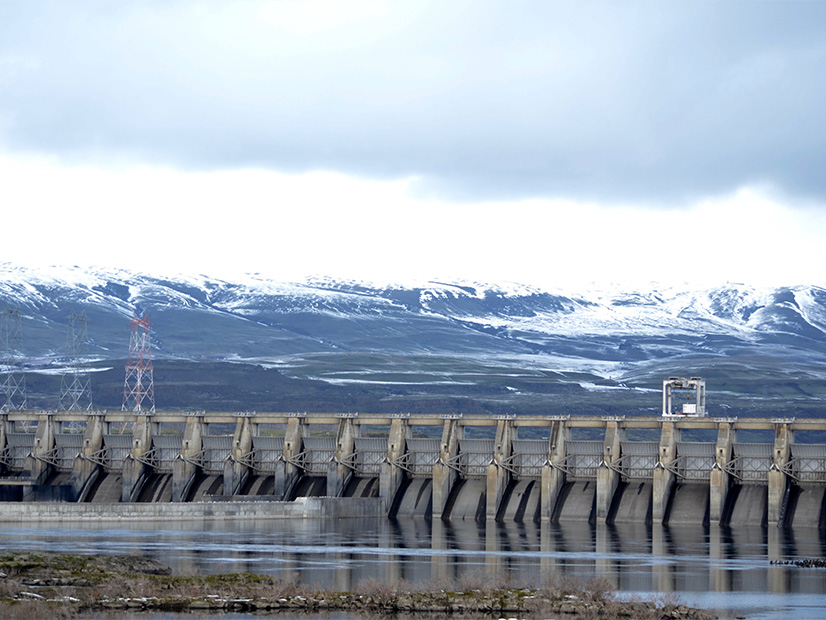Climate change will have a mixed impact on hydroelectric output in the Pacific Northwest, resulting in wetter winters and springs and drier summers, according to the Bonneville Power Administration.
The changing weather patterns are altering the way the federal power marketing agency plans for the future, prompting it to shorten its look-back period for developing long-term forecasts, Erik Pytlak, BPA’s lead meteorologist, said last week.
“BPA has been looking at climate change for over a decade now, and we have been anticipating for some time that, as the climate continued to gradually warm, what would start happening eventually is it would start impacting our streamflows,” Pytlak said during a WECC summer readiness workshop May 24.
The agency has performed two studies showing that — unlike in the Southwest — the Pacific Northwest will not experience a decrease in streamflow volumes if climate change continues.
“The entire WECC tends to get lumped in as the same climate response, and that’s just not the case. … We have a very varied climate in the West, and so with climate change the responses are going to be different as well as you go from north to south,” Pytlak said.
Pytlak pointed out that the PRISM Climate Group at Oregon State University, which updates its 30-year weather data set every 10 years, recently dropped the relatively cool 1980s and added the warmer 2010s. The group’s data shows that much of the country has warmed 0.5 degrees to 1.5 degrees Fahrenheit in the last 10 years.
PRISM data also indicates that the Northwest’s “precipitation signal” has been different from the rest of the West.
“In the last 10 years or so, while the Southwest on an annual basis has gotten drier, the Pacific Northwest has actually gotten a little wetter. And in the key snowpack areas, it is actually notably wetter, particularly in the Cascades of Washington, parts of Montana and British Columbia,” Pytlak said.
Joint climate models produced by BPA, the U.S. Army Corps of Engineers and the federal Bureau of Reclamation show winters in the Northwest getting wetter over the next 20 to 30 years, with the most increased precipitation farther north in Canada, he added.
An Era of ‘Non-stationarity’
BPA predicts that the most “profound change” will be seen in the region’s streamflows, with higher fall, winter and early spring flows by the 2030s, and peak runoff coming earlier in the spring. The latter assumption is based on the fact that peak spring runoff has already shifted to several days earlier since the 1980s — a “statistically significant” amount, according to Pytlak. The agency also sees the likelihood for more extreme flood events in the colder months.
Stream flows in June, normally a peak period in the Northwest, are likely to decline, followed by a longer period of lower summer flows as the region’s already dry summers become hotter and drier and electricity use increases because of cooling demand.
“We have seen a slight decrease in summer flows that is not statistically significant yet, but it is close, and you can kind of guess that, if these [climate-driven] things continue, and that shift does continue to occur, that statistical significance will show up here relatively soon,” Pytlak said.
The region’s climate is now in an era of “non-stationarity,” according to Pytlak, “where the past does not necessarily predict the future” with respect to weather.
In response, BPA has already adopted a shorter period-of-record for the ensemble streamflow projection runs it uses for its medium-term planning, switching from 1948-2015 to 1981-2018. It has also updated the long-term temperature data it uses to forecast loads, moving from 1970-2005 to 2005-2019.
For future long-term planning, BPA is proposing to base its stream flow assumptions for hydroelectric forecasts on only the most recent 30 years of data (1989-2018), rather than looking back over the last 90 years.
As a result, BPA planners will expect to have more generation available from December to March — a period of potentially decreasing demand caused by warmer conditions — and less available from July to September, when demand is expected to rise.
“What the most recent 30 years [of data] is starting to show, if we were to switch to that, it should help us keep up with what the climate projections are showing over the next 30 years, which is an increasing amount of water in the wintertime and early spring, which should equate to more generation. But the trade-off is a longer period of low summer flows in that July and August period, which means lower potential with generation going forward,” Pytlak said.



